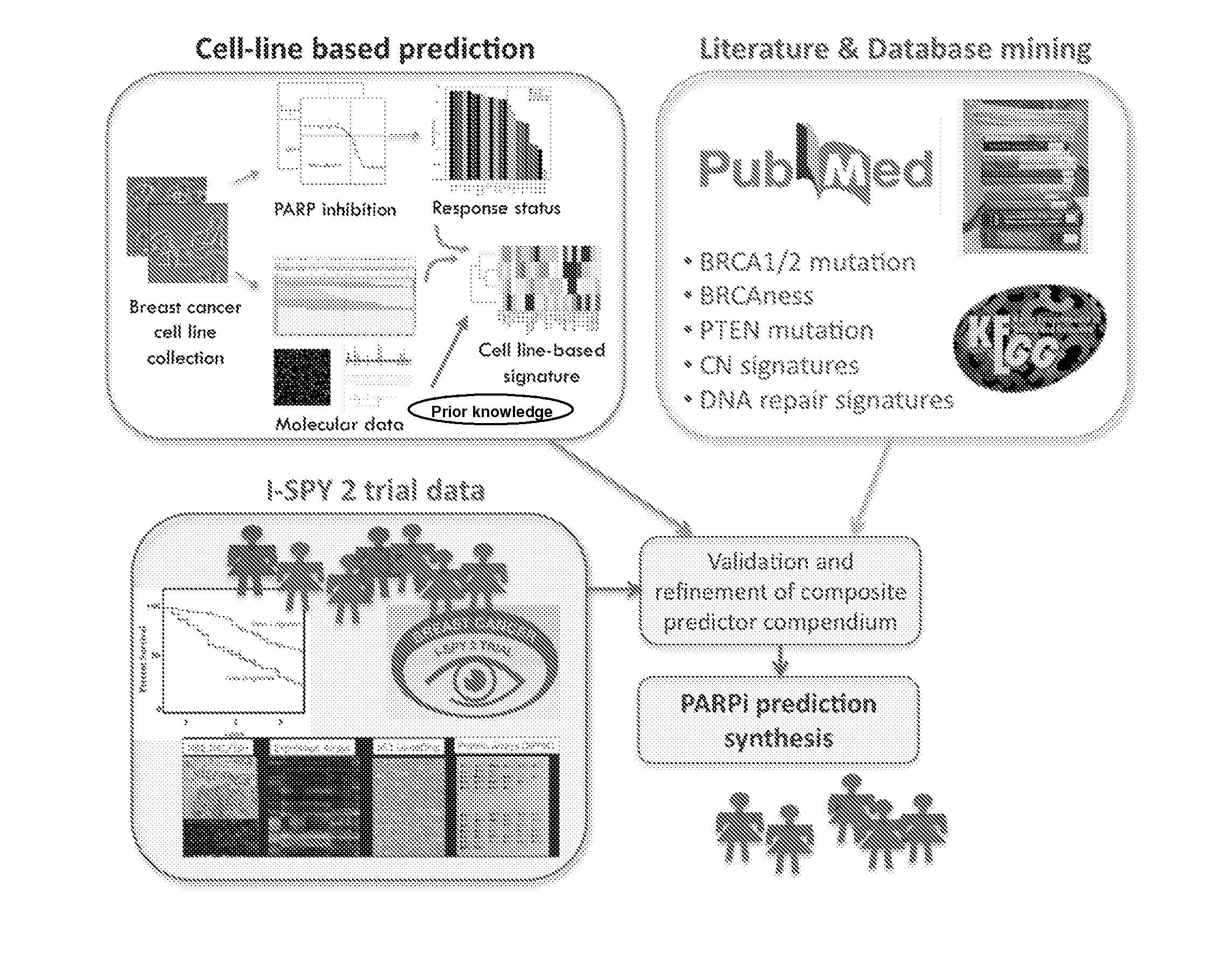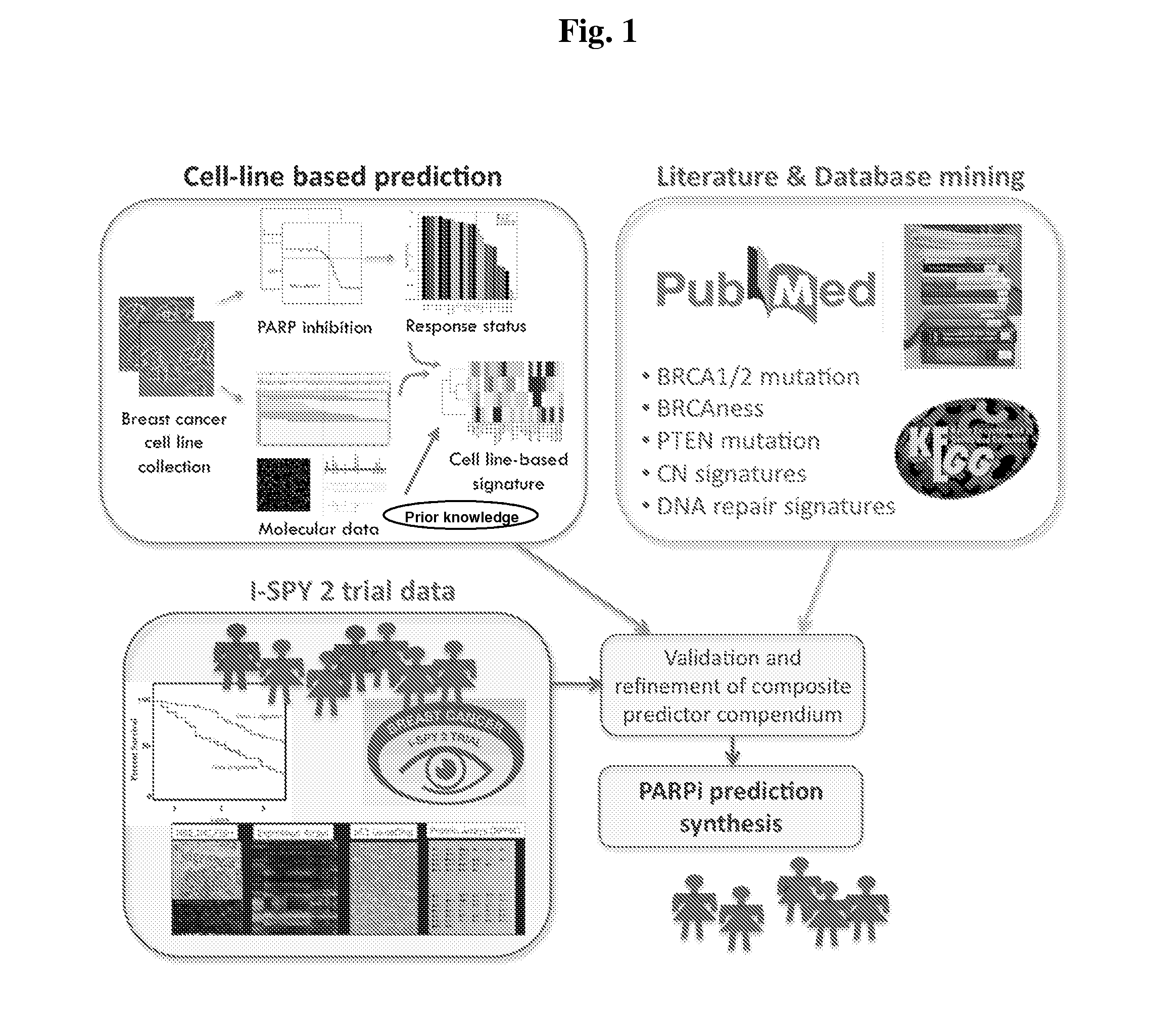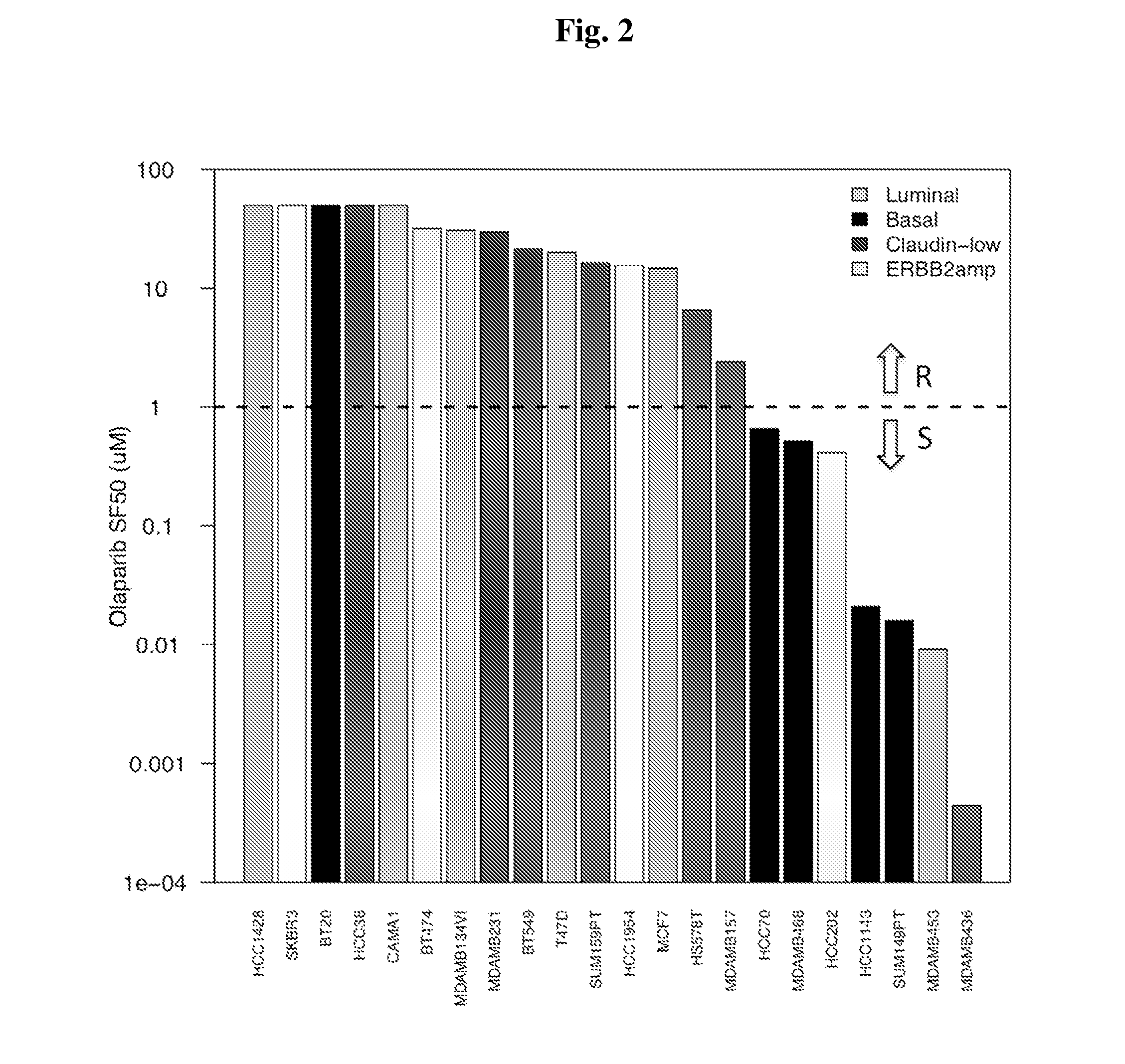Biomarkers for Prediction of Response to PARP Inhibition in Breast Cancer
a breast cancer and parp inhibitor technology, applied in the field of human cancer diagnosis and prognosis methods and applications, can solve the problems of large number of chromatid aberrations, cell death, and not all results have been positive, and achieve the effects of decreasing amplification or expression, and increasing amplification or expression
- Summary
- Abstract
- Description
- Claims
- Application Information
AI Technical Summary
Benefits of technology
Problems solved by technology
Method used
Image
Examples
example 1
Determining an Eight-Biomarker Predictor Panel
[0117]Thirty-three in vitro breast cancer cell lines were administered the PARP inhibitor Olaparib, with sensitivity to the compound summarized as the dose necessary to kill 50% of each culture. mRNA expression (Affymetrix U133A, Exon 1.0ST array) and transcriptome sequence (Illumina GAII) were available for 22 / 33 cell lines, among which 9 were sensitive and 13 resistant. To obtain robust predictive markers that are minimally dependent on the specific PARP inhibitor and expression platform, a bottom-up approach was opted for, restricted to genes in the major DNA repair pathways. Logistic regression with forward selection was used to determine the most important markers, further reduced based on consistency across platforms. The weighted voting algorithm was used to build the final predictor. Eight U133A and two U133 plus 2 data sets with number of tumor samples varying from 61 to 289, 117 samples from I-SPY1 with U133A data, and 430 TCGA...
example 2
Determining Patient Response to PARP Inhibition Using an Eight-Biomarker Predictor Panel
[0146]A patient biopsy is obtained from a patient having diagnosed with breast cancer. The amplification and expression levels of BRCA1, BRCA2, H2AFX, MRE11A, TDG, XRCC5, CHEK1 or CHEK2 are obtained from the sample and a determination is made whether the patient would be resistant or sensitive to a PARP inhibitor such as Olaparib. The patient's therapy could be altered to recommend non-use of PARP inhibitors if the patient is determined to be resistant or if the patient is determined to be sensitive to PARP inhibitors, then PARP inhibitors are prescribed and administered.
example 3
Determining a Seven-Biomarker Predictor Panel
[0147]We identified candidate biomarkers associated with response to olaparib by correlating responses to 9 concentrations of olaparib in a panel of well characterized breast cancer cell lines with the transcription levels of genes involved in aspects of DNA repair. Genes tested for correlation with olaparib response included those reported in the literature to be directly relevant to PARP inhibitor response or involved more generally in some aspect of DNA repair (FIG. 1). We applied this signature to primary tumor data to identify the frequency and characteristics of tumors that might be expected to respond to olaparib. These studies set the stage for a clinical test of the sensitivity and specificity of this predictor and indicate known subtypes of breast cancers that might be preferentially sensitive to olaparib.
Material and Methods
[0148]Breast Cancer Cell Lines, Assay, and Molecular Data.
[0149]The sensitivity of a panel of 22 breast c...
PUM
| Property | Measurement | Unit |
|---|---|---|
| size | aaaaa | aaaaa |
| covalent bond | aaaaa | aaaaa |
| resistance | aaaaa | aaaaa |
Abstract
Description
Claims
Application Information
 Login to View More
Login to View More - R&D
- Intellectual Property
- Life Sciences
- Materials
- Tech Scout
- Unparalleled Data Quality
- Higher Quality Content
- 60% Fewer Hallucinations
Browse by: Latest US Patents, China's latest patents, Technical Efficacy Thesaurus, Application Domain, Technology Topic, Popular Technical Reports.
© 2025 PatSnap. All rights reserved.Legal|Privacy policy|Modern Slavery Act Transparency Statement|Sitemap|About US| Contact US: help@patsnap.com



